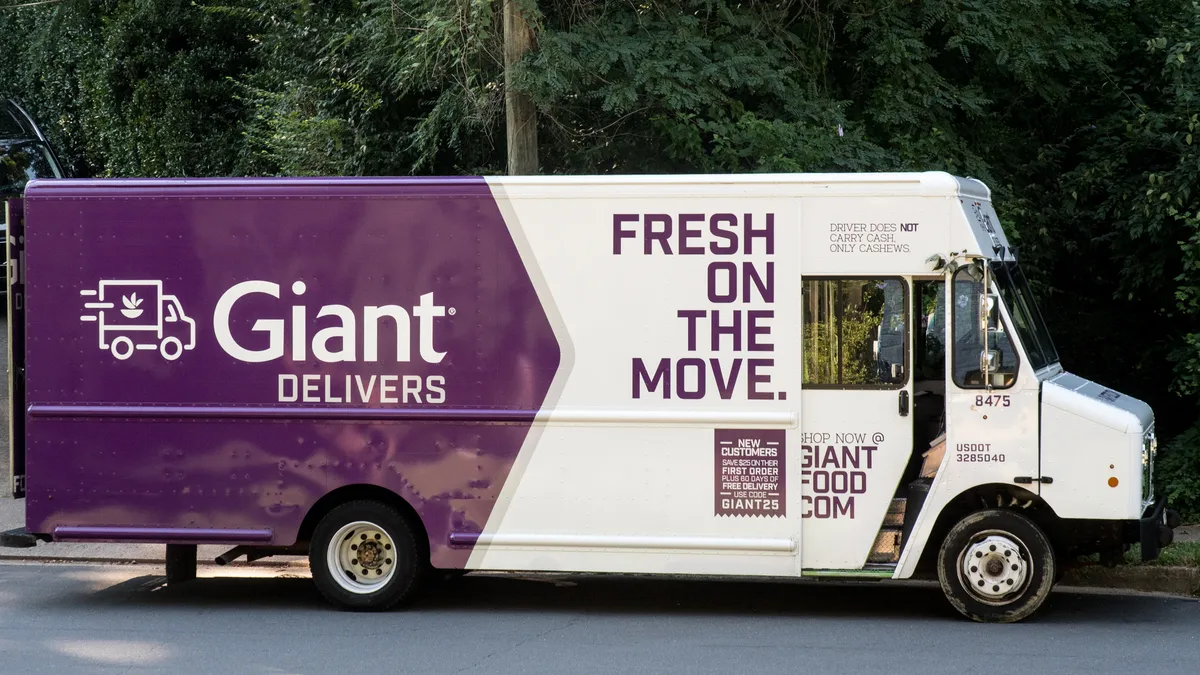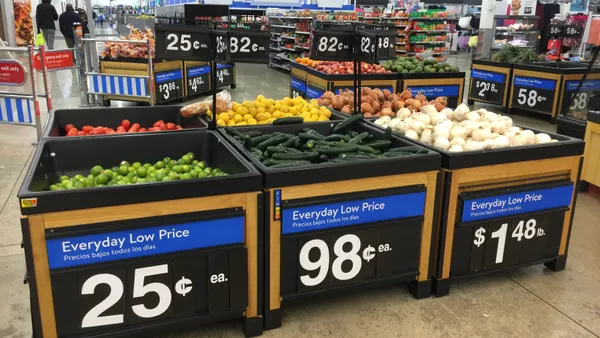Dive Brief:
- Online grocery shoppers place a higher priority on being able to choose when their order will be delivered than on how quickly it will show up, according to research released Monday in the MIT Sloan Management Review, a magazine published at the Massachusetts Institute of Technology's Sloan School of Management.
- Customers are willing to wait 10.8 hours longer for their goods to arrive in return for shortening the delivery window by an hour, and 7.5 hours longer if they schedule it for the day of the week they prefer, the researchers concluded.
- The study's findings differ from research showing that speed matters most to people who place orders for groceries using e-commerce channels.
Dive Insight:
Even as investors pour billions of dollars into startups that promise grocery delivery in as little as 10 minutes, retailers that aren't equipped to fulfill orders on a dime are actually in an optimal position to give customers what they want when they head online to buy food, said Pedro Amorim, an assistant professor of industrial engineering at the University of Porto in Porto, Portugal, and one of the study's two authors.
That's because traditional grocers are in possession of large quantities of information about people's online shopping behavior and their delivery preferences that, taken together, can be used to understand the links between what customers buy and how they want to receive their orders, said Amorim, who specializes in supply chain planning with an emphasis on food products.
"It's important that retailers understand that they need to improve their planning operations, they need to be more granular, they need to have more info about how much time it takes to go from A to B at a given point in time," Amorim said.
To discern the connection between people's shopping patterns and delivery preferences, Amorim and co-author Nicole DeHoratius, an adjunct professor of operations management at the University of Chicago Booth School of Business, worked with an unnamed European food retailer with approximately 3,000 stores across multiple countries to analyze 152,195 online grocery transactions. For each transaction they looked at, the researchers knew what the customer ordered, the delivery slots they were offered and the slot they selected.
The researchers concluded that data grocers collect about shoppers sheds light on a variety of factors that affect people's delivery choices that can be easily overlooked, Amorim said. For example, the researchers found that people with larger baskets were willing to pay more for both delivery speed and precision, which Amorim said came as a surprise.
Amorim and DeHoratius also found that people who repeatedly placed orders with the retailer were willing to pay more than other shoppers to lock in their delivery preferences. In addition, customers with large baskets were willing to pay twice as much as people who bought less to arrange for a delivery window tighter by one hour, their analysis found.
Perhaps not surprisingly, Amorim and DeHoratius determined that shoppers are more interested in paying for faster delivery when ordering a lot of perishables. At the same time, customers tended to prefer to get orders at the end of the work week rather than over the weekend, they found.
Amorim, who co-founded LTPlabs, a firm in Porto that helps companies crunch information, and DeHoratius suggested that retailers pay close attention to data about how their customers shop online before committing to costly investments aimed primarily at making faster deliveries possible. Those investments, like automated picking systems and larger delivery fleets, might not be necessary, especially if grocers pay attention to data about traffic patterns that can help them better manage logistics, they said in their MIT Sloan Management Review article.
"Leveraging customers’ willingness to pay for the three core home delivery attributes of speed, precision, and day choice will require omnichannel retailers to consider preferences beyond simply delivery speed," Amorim and DeHoratius wrote.
Other research suggests that delivery speed is the most important factor for many grocery delivery customers. For example, 61% percent of participants in a survey conducted by NielsenIQ earlier this year said they prefer to get their orders as quickly as possible. That same study, which was conducted between Feb. 26 and March 28, showed that shoppers were growing more interested in same-day delivery.
Numerous startups touting delivery in as little as 10 minutes have expanded across cities and Europe, and a few, including Gorillas and Jokr, have recently landed in New York City. In May, Instacart launched a 30-minute delivery and expanded its 45- and 60-minute delivery windows to meet what it said is growing demand for faster fulfillment options.













